About this ransomware
Discovered by researcher Amigo-A, Scarab-Skype Ransomware is file encrypting malware, a variant of Scarab ransomware or Amnesia ransomware. It has many different variants, such as Scarab-FastRecovery and Scarab-Danger. It’s a dangerous piece of malware because it encrypts files, and their recovery may not always be possible. File encryption happens immediately after the infected file is opened on the computer, and when the process is complete, the user is informed that files have been locked and that paying a ransom is necessary to unlock them. The amount requested depends on the ransomware, but typically, users are asked to pay somewhere between $100 and $1000. Whatever the sum may be, paying the ransom is not something that cybersecurity specialists will recommend. One of the major reasons is the fact that crooks may not feel obliged to recover your files even if you pay. There’s really nothing stopping them from taking your money and not helping you. Furthermore, by paying, you would be encouraging the crooks to continue this activity, as it bring them profit.
Ransomware can get inside a computer in a couple of ways, the most common of which is probably spam email. You likely opened an email attachment which was infected with malware. If that is the case, you need to be more careful about which emails you open.
If you have backed up files prior to the infection, you can remove Scarab-Skype Ransomware and then access your backup. However, if you do not have backup, you have the option of waiting for malware researchers to develop a free decryptor. Back up the encrypted files, get rid of the ransomware, and hope for the best.
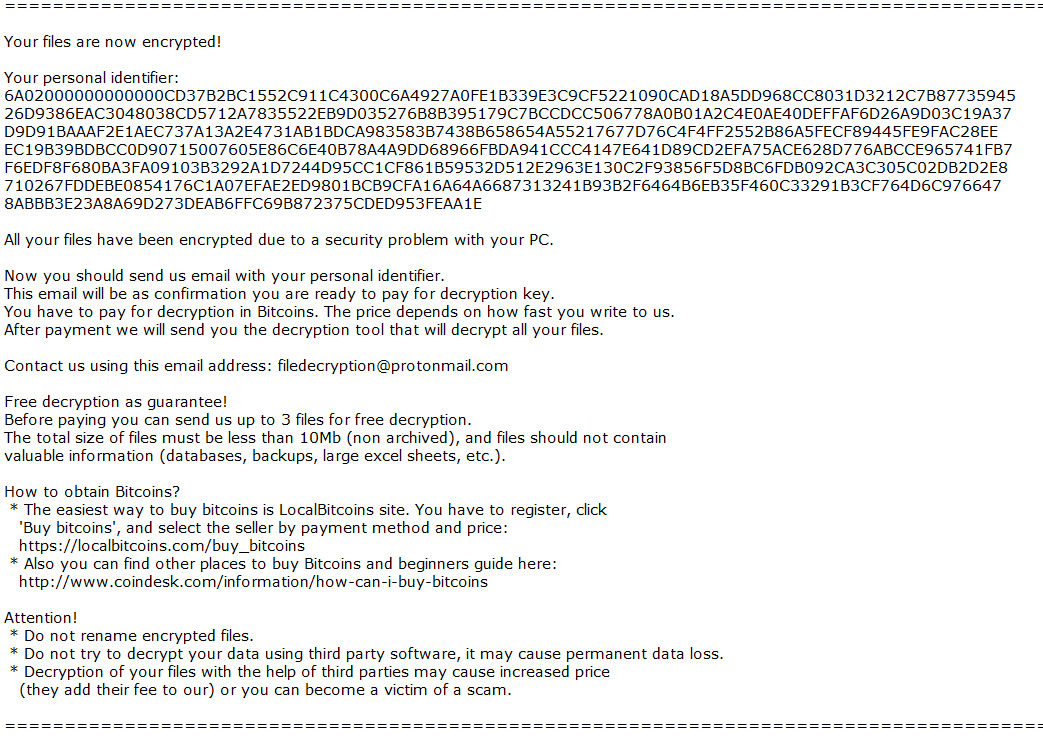
How does ransomware spread?
Spam email is usually used to distribute ransomware. It’s attached to an email, and the email itself makes it seem as if the attachment is a very important document. In a lot of such emails, the sender claims the attachment is some kind of receipt for a purchase, or some other money-related document. The sender can even claim to come from legitimate companies, such as Amazon, eBay, etc. Users would open the attachment without thinking, and the ransomware can begin the encryption process.
No matter how sophisticated, it’s possible to spot a spam email. First of all, check the sender’s email address. If it’s from a legitimate company/sender, the address won’t be a random string of numbers and letters. And even if it does look real, you should still check that it belongs to the company the sender claims to be from.
Check for grammar mistakes, and whether you are addressed by name. If the sender is from a company whose service you use, you will be addressed by name as it would be inserted automatically into the email. If generic User, Member, Customer, etc. are used, it might be wise to be suspicious.
Finally, you should always scan attachments with a malware scanner before you open them. If it’s malicious, the scanner will tell you.
You should also stay away from dubious reputation download websites, as well as Torrents.
What happened to your files
As soon as the ransomware file is opened, file encryption process will begin. Generally, files that users are most likely to pay for will be encrypted. That includes photos, videos, documents, etc. All affected ones will have the .skype file extension added to them, which will help you easily differentiate encrypted files. When the encryption process is complete, you will find a ‘HOW TO RECOVER ENCRYPTED FILES.txt.’ file. It will explain that your files have been encrypted and that you now need to pay for a decryptor if you wish to recover files. The note does not specify what amount you have to pay, but it does say that it will have to paid in Bitcoins and that with every 72 hours the price will increase. The note encourages users to contact them within the first 72 hours in order to get the best price.
Whatever the amount is, particularly if it’s a big amount, you aren’t recommended to pay. What’s there to prevent the people behind the ransomware from just taking your money? It has happened countless times, and victims were left with encrypted files and lost money.
The best way to combat ransomware is to regularly back up files. This will help prevent file loss not only in cases that involve ransomware, but also in other situations. Therefore, we really do recommend that you invest in backup.
We should mention that malware researchers release free decryptors for some ransomware. And even if one is yet to be released for this malware, it may become available in the future. If you choose to wait for the decryptor, save the encrypted files somewhere and then delete Scarab-Skype Ransomware.
Scarab-Skype Ransomware removal
If you go with manual Scarab-Skype Ransomware removal, you might end up doing more damage. Thus, we would recommend you obtain anti-malware software and allow it to uninstall Scarab-Skype Ransomware for you. Once the ransomware is fully eliminated, you can proceed to file recovery via backup, if you have it.
Offers
Download Removal Toolto scan for Scarab-Skype RansomwareUse our recommended removal tool to scan for Scarab-Skype Ransomware. Trial version of provides detection of computer threats like Scarab-Skype Ransomware and assists in its removal for FREE. You can delete detected registry entries, files and processes yourself or purchase a full version.
More information about SpyWarrior and Uninstall Instructions. Please review SpyWarrior EULA and Privacy Policy. SpyWarrior scanner is free. If it detects a malware, purchase its full version to remove it.

WiperSoft Review Details WiperSoft (www.wipersoft.com) is a security tool that provides real-time security from potential threats. Nowadays, many users tend to download free software from the Intern ...
Download|more


Is MacKeeper a virus? MacKeeper is not a virus, nor is it a scam. While there are various opinions about the program on the Internet, a lot of the people who so notoriously hate the program have neve ...
Download|more


While the creators of MalwareBytes anti-malware have not been in this business for long time, they make up for it with their enthusiastic approach. Statistic from such websites like CNET shows that th ...
Download|more
Quick Menu
Step 1. Delete Scarab-Skype Ransomware using Safe Mode with Networking.
Remove Scarab-Skype Ransomware from Windows 7/Windows Vista/Windows XP
- Click on Start and select Shutdown.
- Choose Restart and click OK.

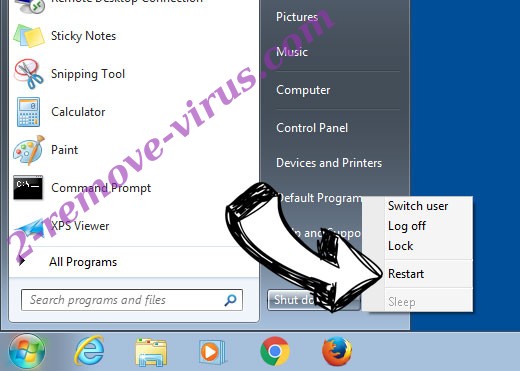
- Start tapping F8 when your PC starts loading.
- Under Advanced Boot Options, choose Safe Mode with Networking.

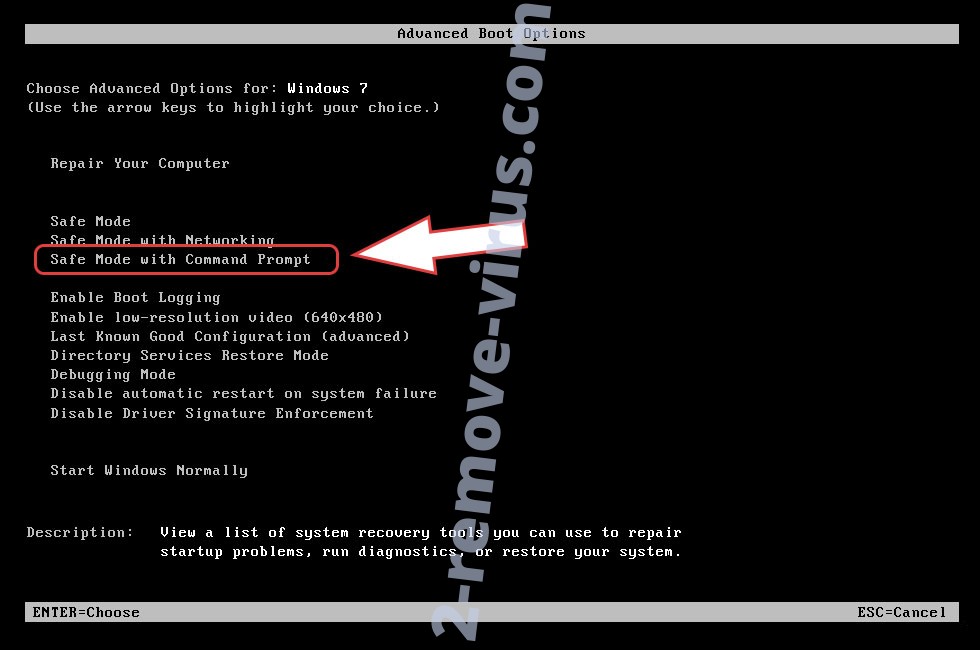
- Open your browser and download the anti-malware utility.
- Use the utility to remove Scarab-Skype Ransomware
Remove Scarab-Skype Ransomware from Windows 8/Windows 10
- On the Windows login screen, press the Power button.
- Tap and hold Shift and select Restart.

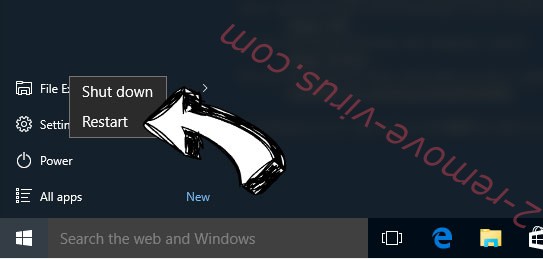
- Go to Troubleshoot → Advanced options → Start Settings.
- Choose Enable Safe Mode or Safe Mode with Networking under Startup Settings.

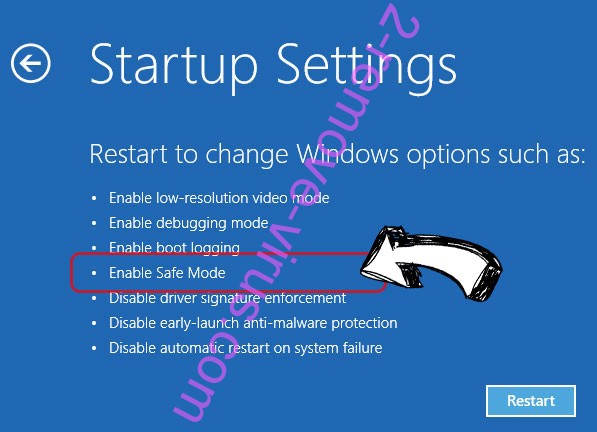
- Click Restart.
- Open your web browser and download the malware remover.
- Use the software to delete Scarab-Skype Ransomware
Step 2. Restore Your Files using System Restore
Delete Scarab-Skype Ransomware from Windows 7/Windows Vista/Windows XP
- Click Start and choose Shutdown.
- Select Restart and OK


- When your PC starts loading, press F8 repeatedly to open Advanced Boot Options
- Choose Command Prompt from the list.

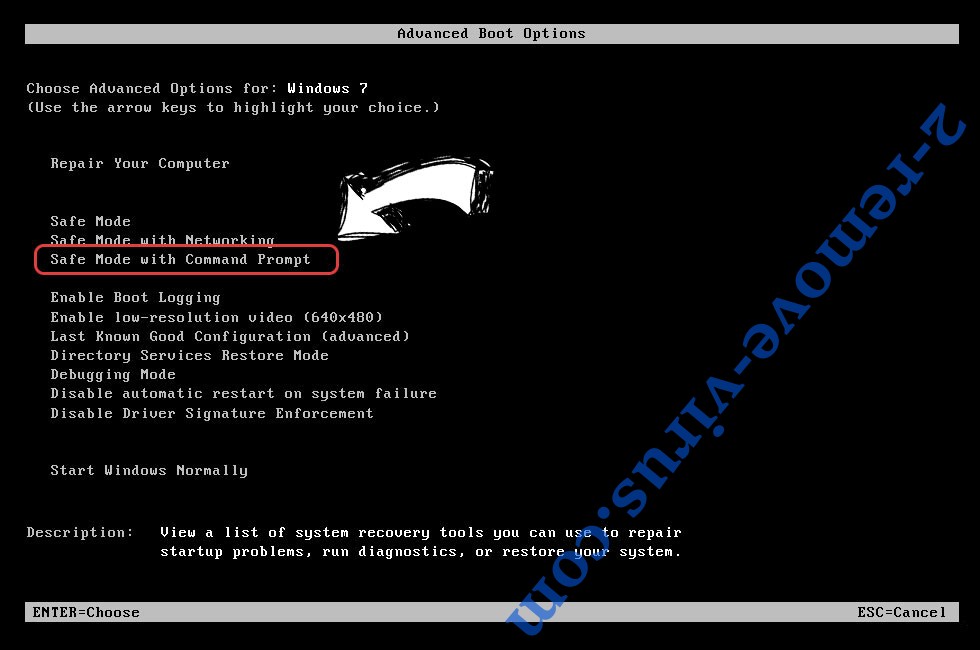
- Type in cd restore and tap Enter.

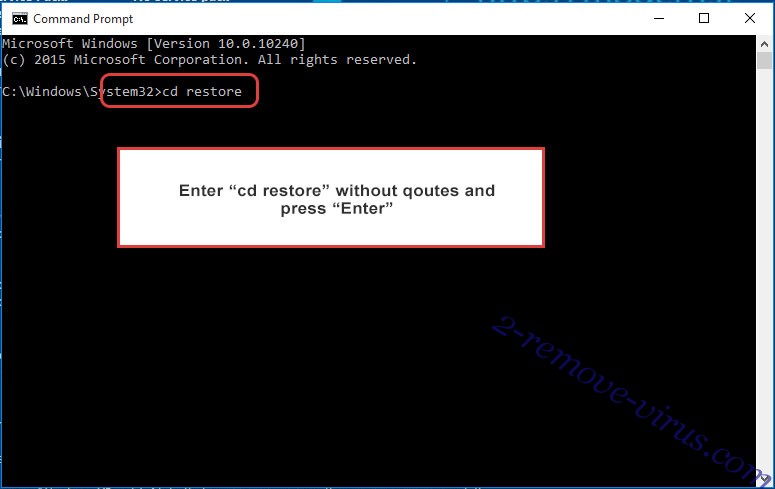
- Type in rstrui.exe and press Enter.

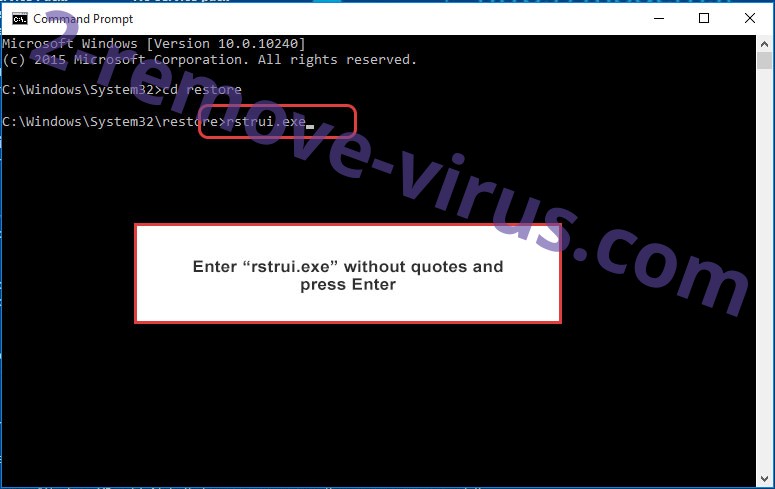
- Click Next in the new window and select the restore point prior to the infection.

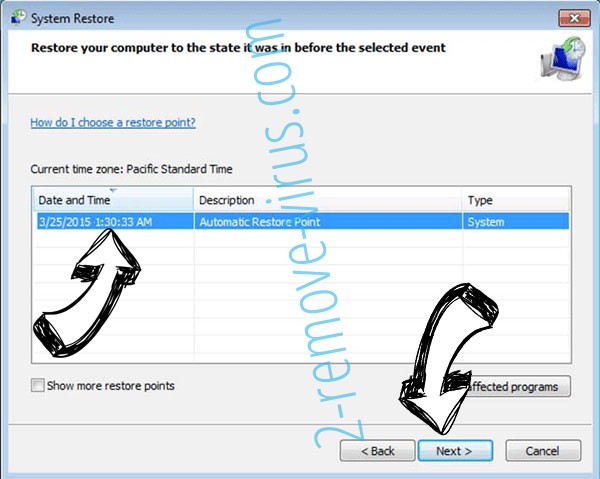
- Click Next again and click Yes to begin the system restore.

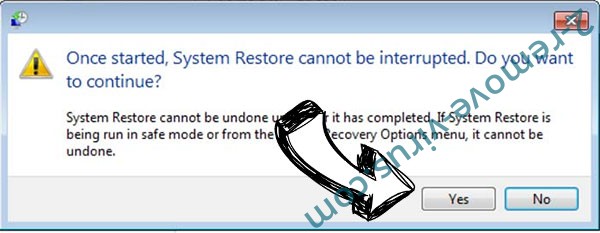
Delete Scarab-Skype Ransomware from Windows 8/Windows 10
- Click the Power button on the Windows login screen.
- Press and hold Shift and click Restart.


- Choose Troubleshoot and go to Advanced options.
- Select Command Prompt and click Restart.

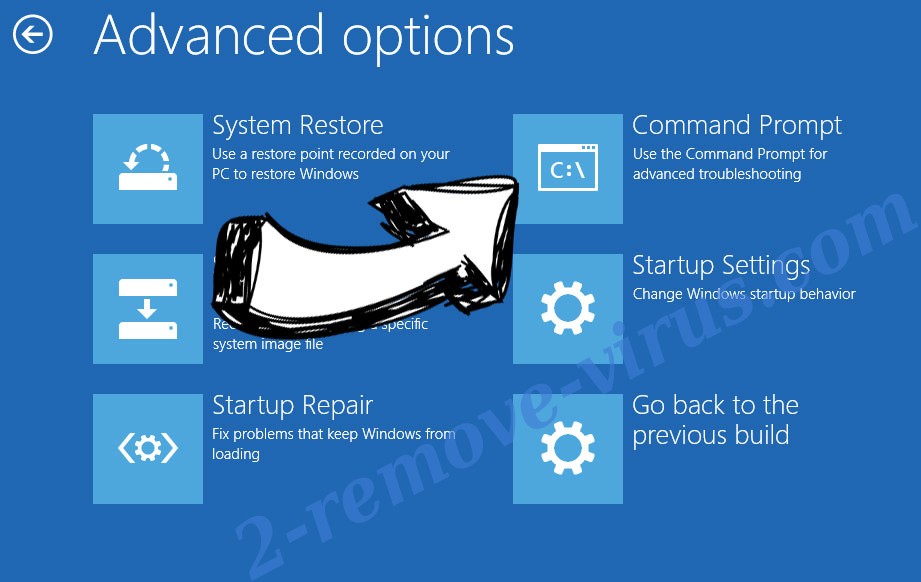
- In Command Prompt, input cd restore and tap Enter.


- Type in rstrui.exe and tap Enter again.


- Click Next in the new System Restore window.

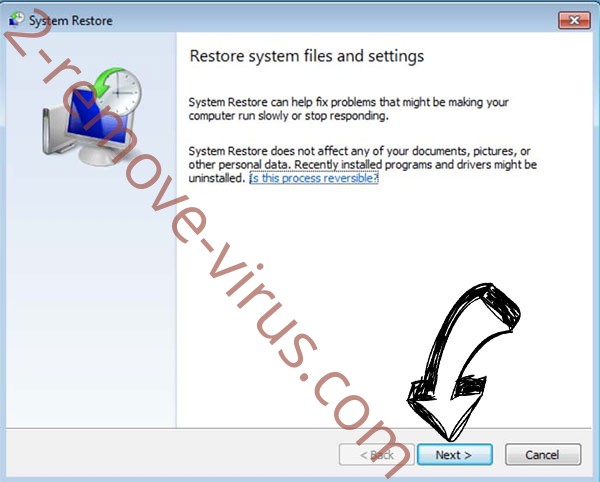
- Choose the restore point prior to the infection.


- Click Next and then click Yes to restore your system.


Site Disclaimer
2-remove-virus.com is not sponsored, owned, affiliated, or linked to malware developers or distributors that are referenced in this article. The article does not promote or endorse any type of malware. We aim at providing useful information that will help computer users to detect and eliminate the unwanted malicious programs from their computers. This can be done manually by following the instructions presented in the article or automatically by implementing the suggested anti-malware tools.
The article is only meant to be used for educational purposes. If you follow the instructions given in the article, you agree to be contracted by the disclaimer. We do not guarantee that the artcile will present you with a solution that removes the malign threats completely. Malware changes constantly, which is why, in some cases, it may be difficult to clean the computer fully by using only the manual removal instructions.
